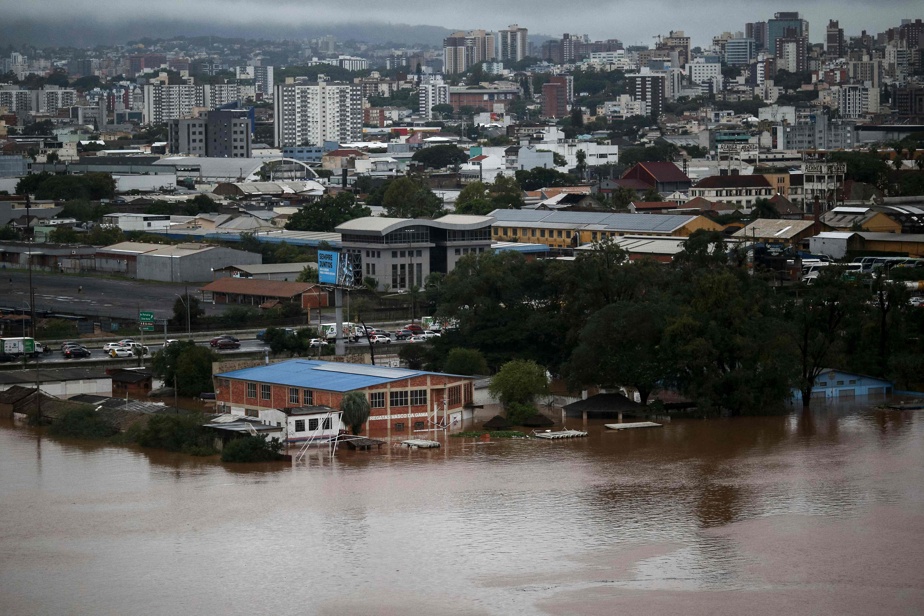(São Sebastião do Caí) The toll from the torrential rains which are causing chaos in southern Brazil increased further on Friday, with 31 dead and 74 missing, while river levels continue to rise alarmingly.
The task of rescuers is very difficult, with entire towns practically cut off from the world, made inaccessible by the floods which have devastated the state of Rio Grande do Sul, where it is expected to rain at least until Saturday.
The human and material damage is mainly concentrated in the central region of this state bordering Argentina and Uruguay, which is experiencing the “worst climatic disaster in its history”, according to its governor, Eduardo Leite.
The images are striking: areas of housing drowned as far as the eye can see, destroyed roads or bridges swept away by the current, not to mention the ruptured dams which risk making the situation even worse.
“Here is my home and I feel a lot of pain, it hurts my heart,” Maria Luiza, 51, who lives in Sao Sebastiao do Cai, in one of the most affected areas, told AFP by floods.
On Friday, streets of the metropolis Porto Alegre, capital of Rio Grande do Sul, were in turn invaded by water due to the exceptional flood of the Guaiba, an emblematic river of southern Brazil.
The authorities estimate that the level of Guaiba could soon reach 5 meters. The historical record, dating from 1941, is 4.71 meters.
“Climate crisis”
The previous Civil Defense report, dating from Thursday evening, was 29 dead and 60 missing in the state of Rio Grande do Sul.

PHOTO ANSELMO CUNHA, AGENCE FRANCE-PRESSE
A volunteer and a municipal employee use a fishing boat to rescue animals in Eldorado do Sul.
The number of injured also increased, from 36 to 56 on Friday.
More than 250 localities have been hit for several days by devastating storms and thunderstorms.
The latest count from the authorities shows 351,000 victims. Some 17,000 people had to leave their homes, including more than 7,000 accommodated in emergency accommodation.
But all these figures are unfortunately “very preliminary”, warned Governor Eduardo Leite, who declared a state of “public calamity” on Wednesday.
“With the deepest pain, I know that there will be more deaths,” he lamented Thursday evening.
Brazilian President Luiz Inacio Lula da Silva visited the region on Thursday, promising that it would not lack human or material “resources” in the face of this tragedy.
The federal government has committed to sending helicopters and boats, as well as more than 600 soldiers, to strengthen relief operations and the distribution of food to disaster victims.
The weather forecast is not encouraging, with heavy rain expected to persist at least until Saturday.
According to local authorities, hundreds of thousands of people were left without electricity.
Water supply is also compromised in many localities, as is access to the internet or mobile phone signal.
Rio Grande do Sul has already been hit several times by deadly bad weather, notably in September, when 31 people died after the passage of a devastating cyclone.
According to experts, these extreme weather phenomena have increased in frequency and intensity with global warming.
Brazil experienced a historic drought last year in the north of the country and the number of forest fires reached a record from January to April, with more than 17,000 outbreaks recorded across the country, more than the half in the Amazon.
“Rain in the south, fire in the north […]. These two tragedies bear the fingerprints of the climate crisis. The government must take urgent measures to prevent the situation from getting even worse,” warned the Climate Observatory NGO collective in a press release.
